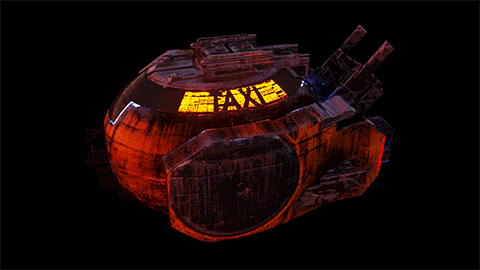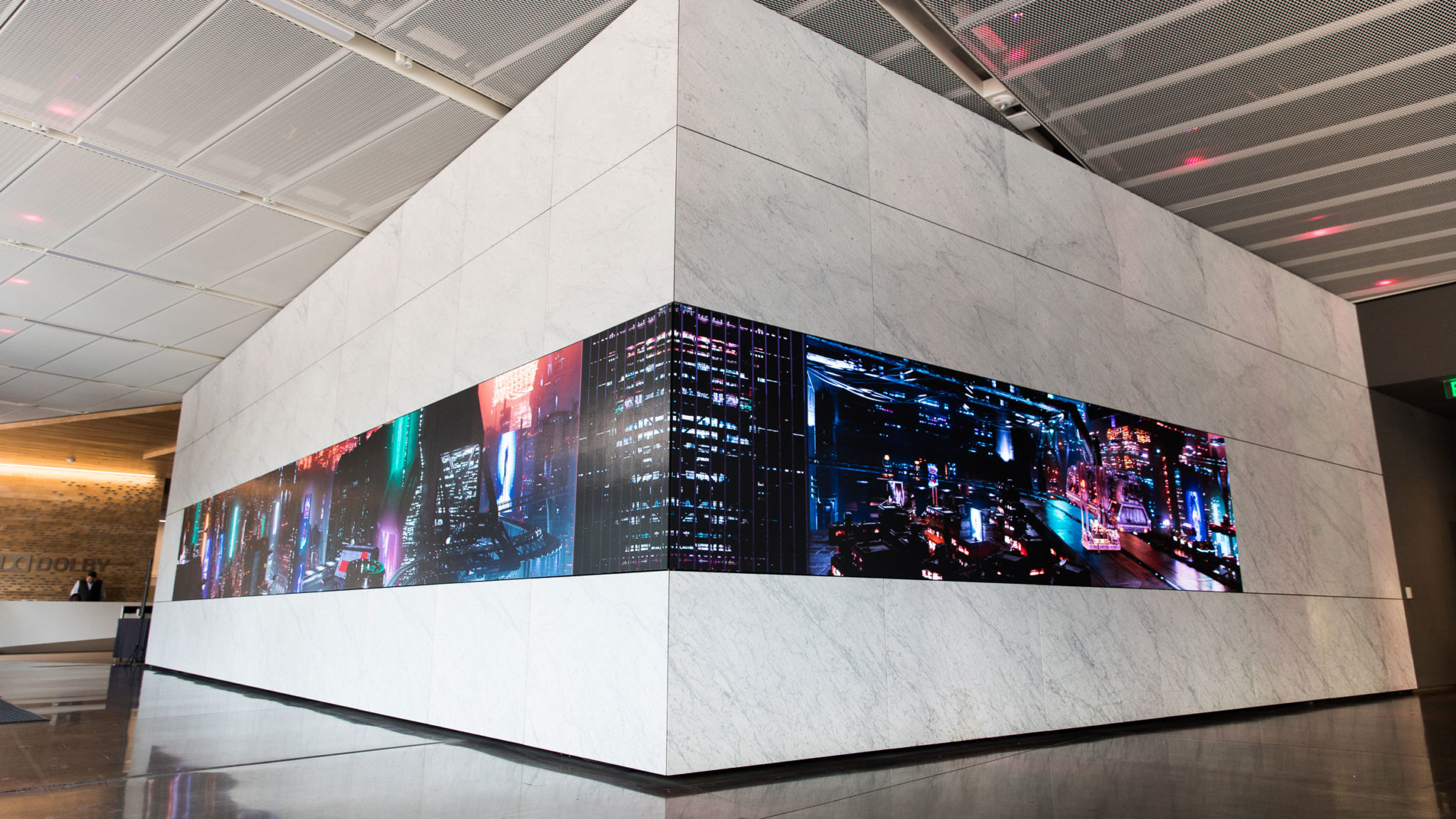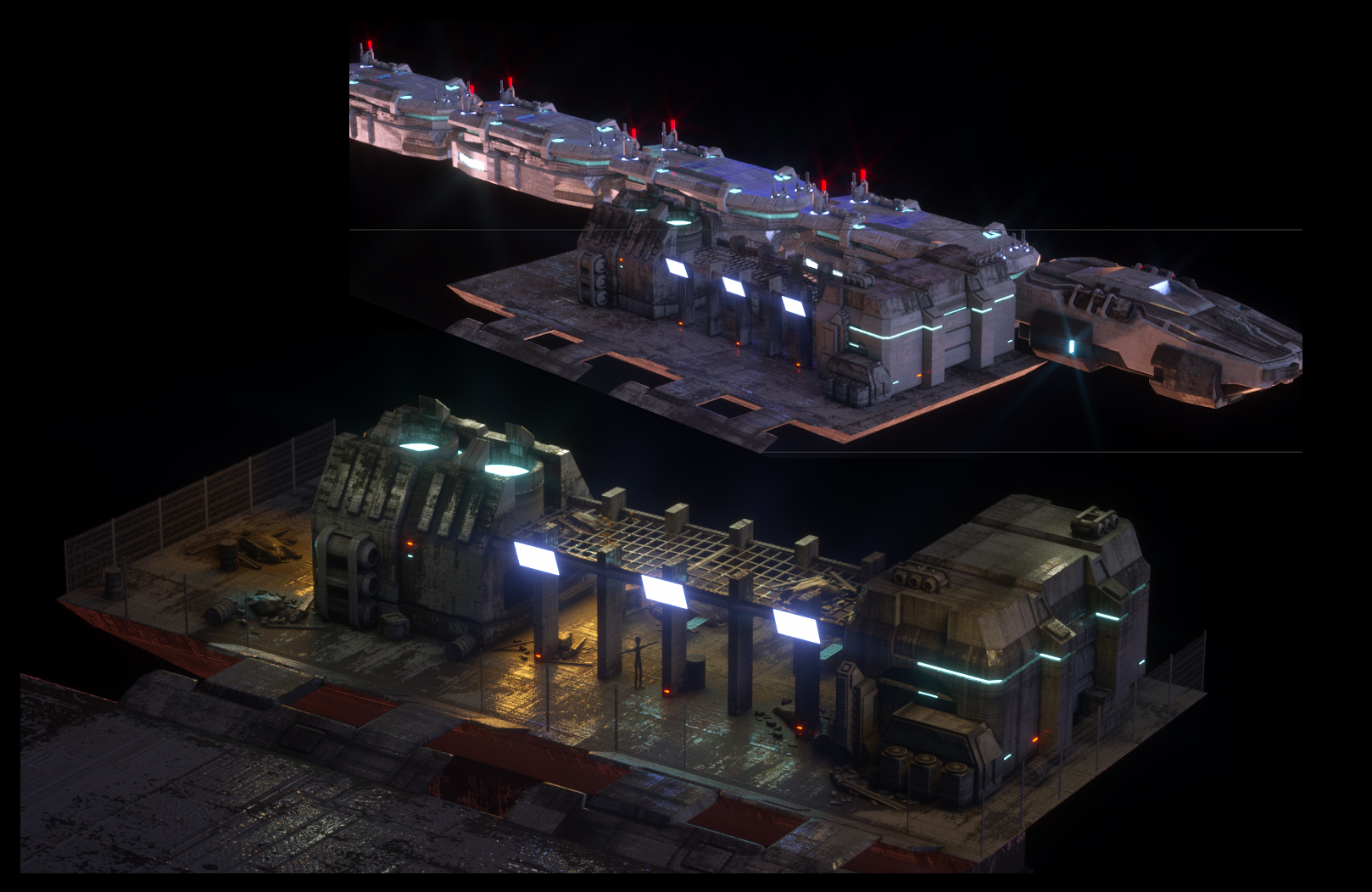Blade Runner-esque 3D CG Cities Built Lego-Style Heralded Dolby Cinema Release of Blade Runner 2049
It’s a bit of a hidden gem, but the Dolby Gallery in San Francisco brings the city’s vibrant art and technology communities together with works by distinctive artists from around the world. Part of Dolby Headquarters, the gallery offers a curated rotation of audio/visual works that are strikingly displayed on a 62-foot-wide LED screen in the lobby. Making the visual experience more immersive is a 52-channel, surround-sound Dolby Atmos system that includes 34 subwoofers.
Recently, Dolby commissioned Territory Studio’s San Francisco team to create an original digital animation for the gallery. Leaving plenty of latitude for creativity, Dolby asked that the animation be inspired by the futuristic, sci-fi, film noir genre that includes films like Blade Runner 2049, which Territory had worked on for several months last year.


The photorealistic 3D animation Territory created includes an original score with sound design.
Using Maxon Cinema 4D, Territory had just four weeks to create a 3D-animated futuristic city from scratch. Inspired by both Blade Runner films, The Fifth Element, Akira and more, the team brought the city to life by also writing a narrative script, casting and recording voiceover talent and composing an original score with sound design. Here, creative director Marti Romances talks about how they designed and built the imaginary city that looked and sounded so real to viewers who saw the two-month exhibition.
StudioDaily: How did Dolby explain what they wanted?
Marti Romances: Dolby asked us to represent their position at the intersection of art and science as they were leading up to the Dolby cinema release of Blade Runner 2049. They wanted to celebrate their history of partnering with Hollywood to provide technologies, which was a natural fit with Territory. They asked us for three ideas, and they chose this one, which was the most challenging because there is so much detail. They said we couldn’t use any props or models from Blade Runner 2049, but we could use the film as inspiration. It was exciting to get to do everything from scratch and just make up whatever we wanted to create. Most of the time when we work on a blockbuster, they already have their team working on it, so we receive props to model and we use our own expertise for creating UI [user interface] and holograms. It was great to have such full creative freedom with this.

Territory used two cameras, front and side, to allow viewers to see the entire city from different angles.
Describe your process for approaching this unusual project.
Using the concept art we had, I worked with our lead 3D artist on this, Devin Earthman. He modeled everything in Cinema 4D and we couldn’t have done this without his rendering expertise. It is a very big screen and that massive format made things more challenging because the quality had to be so clear. We had to split the screen into two parts just so we could work and render and get everything done on time. We faked a perspective view and composited the two parts together, so the scene changes at the corner of the screen but we connect them by having elements like flying cars and trains transitioning from screen to screen. Our goal was precision, and every single pixel was different.
Since the screen is in the lobby, we knew lots of people would be walking by it every day. So we decided, ‘Let’s use this big canvas as a window.’ It really does look like a window in many ways because of the way its L-shape goes around a corner. We wanted people, especially those who stopped to look, to see something different all the time. The piece is about seven minutes long and it loops, but there is a lot going on everywhere and the lighting is always changing like it would naturally, going from sunrise to full daylight and slowly back to night. We knew it wouldn’t be immersive like VR, but the detail, the lighting and the billboards that emit light all make it more of an experience to watch.

Territory created a rich, detailed environment by creating low-polygon models and focusing on texturing and lighting techniques.
What kind of sound did you add to the experience?
We knew that their Dolby audio system was very capable of isolating audio parts, and I wanted to connect people to all of the little stories happening inside that massive city, so I worked with Joshua Rubin, a screenwriter with VR experience, on a narrative and we had three people doing voiceover. Our audio designer, Wes Slover, mixed everything, and it was mind-blowing to hear all of those sounds and voices moving around the room, synchronized with the action.

This taxi was one of several ships the team modeled for the cityscape.
How did you come up with the look for the spaceships?
We already create elements for spaceships for Marvel and Warner Bros., but this time I got to work with Devin and Chase Hochstatter, one of our favorite 3D artists, to create spaceships of our own. We knew we needed a variety of ships, so we kept overall textures very rough. There’s a lot of scratched-up old metal. To add light to the scene, we made sure everything had a bit of luminescence with a variety of lights and colors. It was fun to create pieces of these ships and then combine them in different ways. The geometry of some of those ships is really very simple but it works. That cargo ship that Chase made is beautiful with all of the lights and platforms that go up and down.

By modeling a few varied pieces and combining them in different ways, Territory created many different ships for the scene.

Territory 3D artist, Chase Hochstatter, used C4D to create an elaborate cargo ship by combining simple shapes and cloners.
Did you use that same design approach for a lot of the other elements in the scene?
Yeah, you can see how we had fun with our Lego-like style of building if you look at things like the trains and the train station. It’s kind of a magic moment when you see trains approaching from the right-hand side. We had actors doing train announcements. And we made sure everything was to scale, so there’s always character-size reference in the doorway. Because we had to create lots of different animated characters and crowds within a limited time, we used Mixamo, a tool that lets you download finished animations quickly to incorporate into characters.
People were modeled and rigged to scale to create a more realistic look.
What kind of reaction did people have when they saw it?
We kept hearing from the people at Dolby how they have never had a piece in the gallery with so much detail. People would be walking by and be just mesmerized by it. Everywhere you looked, something was happening — little stories that people could watch and listen to if they wanted to. Some people at Dolby even thought it was real footage from a movie, which we were really happy to hear.
Credits:
Creative Director – Marti Romances
Producer – Lyniel Dao
Lead 3D Artist – Devin Earthman
3D Artist – Chase Hochstatter
Composer/Sound designer – Wes Slover (Sono Sanctus)
Screenwriter – Joshua Rubin
Voice of Izzy/Tallahassee – Ellora Sen-Gupta
Voice of Connor – Stefan Martello
Voice of the Mechanic – Wes Slover
Did you enjoy this article? Sign up to receive the StudioDaily Fix eletter containing the latest stories, including news, videos, interviews, reviews and more.













